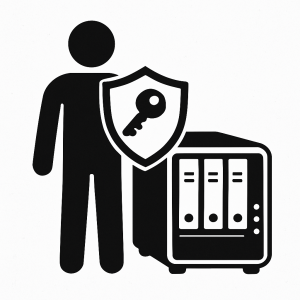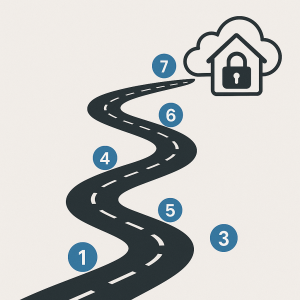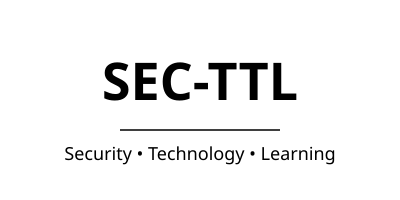Build Private Home Cloud: A Guide to Resilience in Uncertain Times (Series Intro)
Does Your Digital Life Feel Secure Right Now?
Let’s face it, the world feels increasingly unstable. Watching the news in 2025 – ongoing conflicts, shifting alliances, cyber threats as political tools – I started thinking more critically about where my digital “stuff” actually lives. This environment makes the idea to build a private home cloud more compelling than ever, moving critical data away from distant servers owned by a few global corporations, often subject to laws and political pressures I have little visibility into.
The Shifting Digital Landscape (Geopolitics & Your Data)
This uncertainty highlights something increasingly important: data sovereignty. Who really controls your data when it resides in another country? It becomes subject to that nation’s laws and geopolitical realities. Think about potential foreign government access or even service disruptions caused by international disputes. The trend towards a fragmented internet only adds to the uncertainty, making the case stronger for taking direct control.

Why Build a Private Home Cloud? Taking Back Control
I realized I wanted more control, more resilience. I wanted my digital life to be less dependent on decisions made in boardrooms or government offices thousands of miles away. The solution? To build my own little corner of the internet, right here at home. Welcome to the world of self-hosting!
Self-hosting simply means running services (like file storage, calendars, password managers) on hardware that you own and control. It’s like tending your own garden instead of only buying produce from a massive supermarket chain thousands of miles away.

Why take this path? For me, the motivations are clearer than ever:
- True Data Control: Your data lives on your hardware, under your roof (or wherever you choose to put your server!). You decide the rules.
- Enhanced Privacy: Drastically reduce your data’s exposure to third-party tracking, scanning, and potential governmental access requests in other jurisdictions.
- Geopolitical Resilience: Your core services are less likely to be disrupted by international sanctions, trade wars, or sudden policy changes affecting specific cloud providers or countries.
- Customization & Learning: Build exactly what you need, learn invaluable tech skills, and gain a deeper understanding of the infrastructure underpinning our digital world.
- Escape the Subscription Treadmill: While there’s an initial investment, you can replace multiple monthly fees with services you run yourself.
Let’s Be Realistic: Effort vs. Reward
Okay, clicking “Sign Up” for a cloud service is undeniably easy. Building your own? It takes a bit more effort. You’ll need some hardware (though we’ll focus on accessible options), a willingness to learn some new concepts, and time for setup and ongoing maintenance (like updates and backups – crucial!).
But here’s the good news: It’s absolutely achievable, and you don’t need to be a Silicon Valley engineer to do it. My goal with this series is to be your practical guide. We’ll break everything down into manageable, step-by-step chunks. We’ll use reliable open-source software, prioritize straightforward methods, and focus on building a functional and secure system without getting bogged down in unnecessary complexity, especially at the start.
Think of it as learning essential digital life skills for the 21st century. It requires some investment, but the payoff – true ownership and resilience – is immense.
Our Journey to Build Your Private Home Cloud
So, what exactly will we build together? Here’s the map for our 7-part adventure
- The Complete Secure Foundation: We’ll get our chosen hardware operational with the core server operating system. Then, we’ll meticulously establish all our secure, encrypted storage layers – preparing both the resilient foundation for our bulk data and the performant, dedicated storage needed for the applications and virtual systems we intend to run.
- Deploying Essential Network Shares (SMB/NFS): Our first step after building the foundation is making our data easily usable. We’ll set up standard network file sharing (using SMB for Windows/Mac compatibility and NFS for Linux systems) for seamless access across our home network.
- Creating Our Private Drive & Hub: Deploying the core application for file synchronization, calendars, and contacts – your self-hosted alternative to Google Drive & Co.
- Connecting Safely from Anywhere: Configuring secure remote access so you can reach your files and services when you’re away from home, plus basic checks to ensure things are working.
- Managing Our Digital Keys: Setting up a secure vault for managing your passwords, controlled entirely by you.
- Making Smart Choices for Communication: Examining the tricky world of email and messaging, figuring out the most practical and private solutions.
- Protecting Our Creation: Implementing solid backup strategies and establishing simple routines to keep everything safe and running smoothly long-term.
Ready to Build Your Digital Resilience?
In a world that often feels unpredictable, taking proactive steps to secure your digital life offers real peace of mind. Building your own private cloud isn’t just about cool technology; it’s about regaining control, enhancing your privacy, and building resilience against external forces.
It’s a journey, and like any rewarding project, it takes thoughtful steps. If you’re ready to move beyond just using the cloud and start building your own, I’m excited to guide you.
Let’s begin! The first practical steps are just around the corner in Part 1: Building the Secure Foundation, which will be available very soon. To make sure you don’t miss it, or any future updates in this series and other content on the site, I highly recommend subscribing to the RSS feed:
Stay tuned, and let’s start building your own resilient, private corner of the internet together!


Leave a Reply